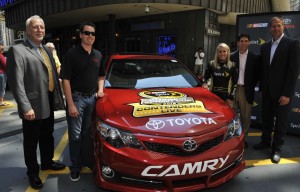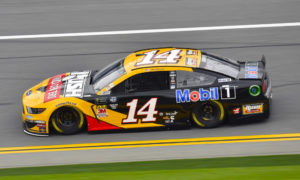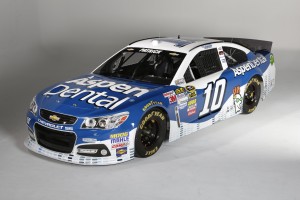When in the 60’s tobacco companies were told they were no longer allowed to have their names painted in capital letters in billboards and magazines, their marketing teams had to come up with a solution. With traditional advertising out of the equation, they needed to put their brands out there via an innovative marketing platform that was popular and yet bold enough to convey the right values.
And yes, back in the day, cigarettes were masculine, brave, powerful, stylish and incredibly sexy -or at least that’s how Madison Avenue portrayed them. The similarities with the bouquet of values sported by another rampant trend of that époque, car racing, were so uncanny that the tobacco industry as a whole decided that race cars sponsorship, and in particular Formula 1 sponsorship, was the next big thing. They were not wrong and the results were amazing: not only sales were up, but other major marketing indicators went through the roof.
Tobacco had found their cash cow and for more than 30 years cigarette brands from Marlboro to Rothmans, from West to John Player Special became synonymous with the world’s fastest single-seaters, creating some of the most iconic liveries of modern design.
A long way to the top (if you wanna rock and roll)
The heyday of tobacco sponsorship, now gone and forgotten (ehm, kinda, sorta), showed the world the immense opportunities of motorsport marketing.
Cars and bikes were fast, technologically advanced, exciting and international. TV audiences were stellar and so were on-track attendances, allowing for amazing on-field activations and events. Drivers and riders, from Senna to Sheene, from Schumacher to Rossi were heroes, modern knights dressed in helmets and leathers leading their roaring machines to the victory. Finally, circuits and racetracks were a joy to attend, as distant were the brawls and scuffles often on display at the football.
And still, as some smart consultant in some sport marketing agency was starting to figure, there was more than met the eye. Tobacco companies were but scratching the surface of a very powerful, very broad marketing tool. Sure, visibility was impressive, but the most savory bit was still to be discovered. Not only was it tasty: it was huge. You know, iceberg-style.
Fits like a glove
The hidden potential in sponsorship unlocks when we turn the whole thing upside down and look at it from a different perspective.
While traditional sponsorship would start from the stickers on the racing car to end with a lot of questions, modern sponsorship would start from a lot of questions and maybe get to a sticker, or maybe not.
See, the most important part of sport sponsorship is its 3-dimensionality. As with every structured object, if you only focus on one feature you really lose the overall potential and purpose, pretty much like owning a 3,500$ PC and only read your email with it. Motorsport sponsorship is effective when it stops being advertising on race cars and becomes a language to translate objectives into goals.
If we agree on this idea, we can then infer that sponsorship needs to be tailor-made to even exist. If a sponsorship plan is a means to an end, then it must be customized, specific and ever different.
What is your commercial goal? What is your marketing goal? Where is your target market? What does your buying persona think or believe? Do you really need that sticker?
Mad world
However, let us be straight. If sport is no easy business, racing is even more difficult. Try to get a hold of someone from a racing outfit to discuss a potential partnership and they’re either on a plane or in a garage surrounded by loud exhausts and electrical screwers. Try to enter a paddock to take a quick peep and you’re either bounced by security or too confused to even know where to watch the damn race. And then there are schedules, technicalities, red tape, and a lot of background culture that’s always taken for granted and then gets in the way right when you thought everything was going according to plan.
Yes, motorsport sponsorship is a tricky business, especially at the very beginning. That is why you should ask a motorsport sponsorship agency for help and consultancy: they will gladly show you the way and ease your way into the industry.
A sports marketing agency, especially when specialized in Formula 1 and MotoGP sponsorship, knows the right person at the right time, has a very clear idea of what t’s need to be crossed and what i’s need to be dotted and -can I have the attention of the class- will work with you for free. Yes, you heard that right. Most of the times, agencies will get their share of the pie from the Team you are sponsoring, not from you (unless of course, you ask the agency to plot an elaborated sponsorship plan or coordinate the sponsorship activations for you.
So, if you are curious or looking for a way to sponsor motorsports efficiently, give a call to a specialized sports marketing agency. You won’t be disappointed.
Author Bio – Riccardo Tafà was born in Gulianova, graduated in Law at the University of Bologna and then decided to follow his deep passion for sport. After attending the ISFORP (public relations training institute) in Milan he moved to England, where he began his career in PR, first at MSP Communication and then at Counsel Limited in London. Soon after that, he moved to SDC, a Belgian outfit headed by Jean Paul Libert and started working with motorsport: the year is 1991. Following a brief transition to Monaco, where he flanked the owner of Pro COM, a sports marketing agency founded by Nelson Piquet, he returned to Italy and began working in first person as RTR, first consulting firm and then sports marketing company.
In 2001 RTR wins the ESCA award for the implementation of the best MKTG sports project in Italy in the year 2000. RTR also obtains the highest score among all the categories and represents Italy in the European Esca Contest. Over the years he gets some satisfactions and swallows some bitter pills. But he is still here, he writes in a disillusioned and simple way, with the goal of providing practical advice and food for thought




